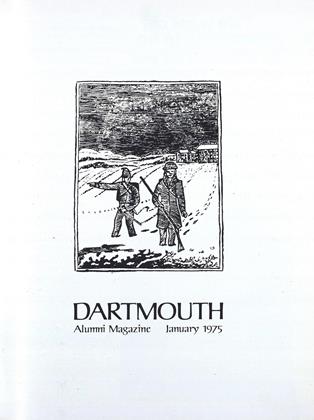Last week, a craggy old-timer came to our farm in East Thetford, Vermont, to deliver a cord of wood. As he was stacking, he noticed two animals in a large chain-link run by the side of the house.
"Always keep your huskies locked up like that?"
"They're not huskies," I told him. "They're wolves."
"Oh," he said, and went on stacking.
Some of our visitors, though, are more impressed, especially children raised, as most of us were, with the Big Bad Wolf.
We acquired the two Alaskan tundra wolves we call Franny and Farley two years ago through a predatory animal conservation center where my husband has worked as veterinarian and researcher. The pups, born in captivity, were hand-reared from the age of three days, and are now quite tame except for shyness with adult male strangers. They have grown into beautiful animals, rangy and agile, with enormous feet, elegant muzzles and oblique, ambercolored eyes. Farley, the male, spends a good deal of time traveling with my husband, who lectures on the natural history of wolves. I am interested in the symbolization of animals, and write and occasionally lecture on "The Wolf and the Human Imagination."
The wolf, which once ranged over most of the world, is now able to live in only a few wilderness* areas and has become the subject of intensive field and laboratory research. Emerging from these studies is an animal very unlike the blood-thirsty creature of legend. In order to sustain a hierarchical social structure more complex than that of any mammal except for man, wolves have developed a remarkably reliable killing inhibition. When fights occur they rarely end fatally, for the weaker wolf will adopt a submissive posture that inhibits further violence in the stronger animal. An elaborate system of visual and vocal signs is essential to pack life, and his expressiveness is one of the wolf's most fascinating and endearing qualities. As predators, wolves help to maintain the ecological balance, and they do not attack man unless rabid. The creature whose name we have given to a human sexual predator is also largely monogamous. The fears and misconceptions about wolves are deeply rooted, but we hope our work with Franny and Farley will help to assure the survival of their wild brethren.
 View Full Issue
View Full Issue
More From This Issue
-
 Feature
FeatureTHE HUNTERS, OR THE SUFFERINGS OF HUGH AND FRANCIS, IN THE WILDERNESS.
January 1975 -
 Feature
FeatureA Place In the Country
January 1975 By KENNETH A. JOHNSON -
 Feature
FeatureA MEMORANDUM
January 1975 By JAMES L. FARLEY '42 -
 Feature
FeatureJeffrey Hart Professor of English 20 million readers in a single column
January 1975 -
 Feature
FeatureNoel Perrin Professor of English 2 pigs on a single form
January 1975 -
 Feature
FeatureRobert Huke Professor of Geography 150 catfish in a single dame
January 1975
Features
-
 Feature
FeatureRetirement Nears for Seven Dartmouth Professors
JUNE 1959 -
 Feature
FeatureAn Exciting 20-Year Forward March
NOVEMBER 1965 -
 Feature
FeatureKiewit: A Man-Machine Success Story
APRIL 1972 By Charles J. Kershner -
 Feature
FeatureMost Exciting Place on Campus
April 1962 By JOHN R. SCOTFORD JR. '38 -
 FEATURE
FEATUREA Field Guide to Hanover Country Club & Pine Park
SEPTEMBER | OCTOBER 2015 By TED LEVIN -
 Feature
FeatureOrozco And I
MARCH 1991 By Theodore Wachs Jr. '41

